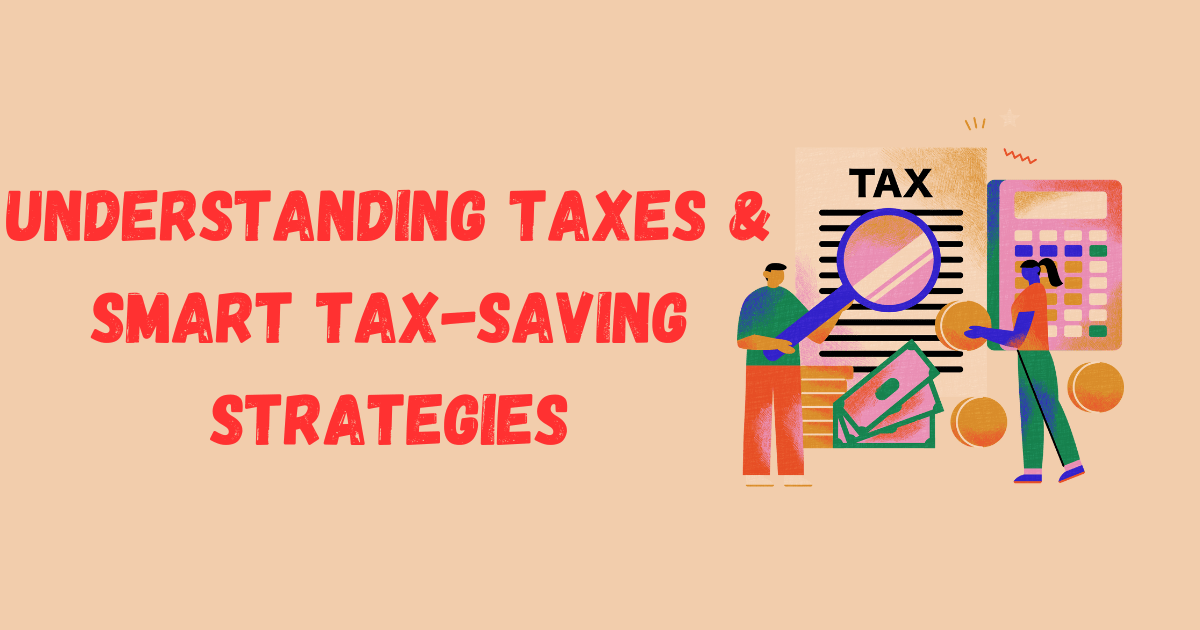Introduction
Taxes are an essential part of our economy. They are the payments citizens make to the government, which helps fund public services like roads, healthcare, and education. While taxes are a part of life, understanding how they work can help you reduce the amount you owe and save money for your future. Proper tax planning can make a big difference in achieving financial stability.
This article will provide an overview of the main types of taxes , discuss common deductions and credits, and share simple strategies for effective tax planning. By making use of these insights, you can learn how to legally minimize your tax burden and improve your savings.
Different Types of Taxes
taxes are generally classified into two main types: Direct Taxes and Indirect Taxes.
- Income Tax
- Income tax is a form of direct tax charged on the earnings of both individuals and businesses. It is calculated according to income tax slabs, which vary based on income levels. For instance, individuals earning above a certain amount might pay a higher percentage in taxes than those earning below it. Income tax returns are filed annually, and understanding the slabs can help you manage this expense effectively.
- Goods and Services Tax (GST)
- GST is an indirect tax levied on the majority of goods and services. Whenever you purchase items like clothes, electronics, or even restaurant meals, you pay GST. It is a comprehensive tax that has taken the place of previous ones such as VAT and service tax. Knowing which products fall under high or low GST rates can help you plan your budget better.
- Property Tax
- In India, property owners are required to pay a tax to the local authorities, calculated based on the value of their property. This tax funds local infrastructure such as road maintenance, water supply, and waste management. If you own a property, it’s important to account for this tax each year.
- Capital Gains Tax
- This tax applies when you sell assets like stocks, property, or other investments for a profit. Capital gains can be short-term (held for less than three years) or long-term (held for three years or more), with different tax rates for each. Planning your investments with capital gains tax in mind can help reduce the tax impact on your profits.
- Other Taxes
- Other taxes in India include wealth tax, inheritance tax, and gift tax, though they are less common. It’s beneficial to be aware of these if they apply to your situation.
Tax Deductions and Credits
Tax deductions and credits are ways to lower the amount of income subject to taxation. Here’s how they work and some common examples in India:
Common Tax Deductions :
- Section 80C: This section offers the most popular deductions, allowing you to claim up to INR 1.5 lakh in tax savings by investing in life insurance, Public Provident Fund (PPF), Employee Provident Fund (EPF), or tax-saving fixed deposits. Many taxpayers use Section 80C to lower their income tax burden.
- Section 80D: You can claim deductions on health insurance premiums under Section 80D. You can avail a claim of up to INR 25,000 for yourself and your family, with an extra INR 50,000 available for parents who are senior citizens. This deduction is a smart way to reduce taxes while securing health coverage.
- Section 80E: Under Section 80E, you can claim a deduction for the interest paid on your education loan while repaying it. There is no limit on the amount you can claim, which is helpful for those with large loan amounts.
- Other Deductions: Sections like 80G allow deductions for charitable donations, while 80TTA and 80TTB provide tax relief on interest income from savings accounts for certain taxpayers.
Tips on Tax Planning
Tax planning is essential to ensure you maximize your income and minimize taxes legally. Here are some tips that work well in India:
- Invest in Tax-Saving Instruments
- Options like the Public Provident Fund (PPF), Equity-Linked Savings Scheme (ELSS), and National Pension System (NPS) are great for tax-saving investments. Not only do these help reduce your taxable income, but they also encourage long-term savings.
- Plan Charitable Contributions
- Donations made to government-approved charities qualify for tax deductions. These fall under Sections 80G and 80GGA, allowing deductions between 50% and 100% of the donated amount, based on the type of organization. Keeping records of these donations helps when filing returns.
- Buy Health Insurance
- Health insurance premiums save tax under Section 80D and provide essential health coverage. This deduction benefits not only individuals but also covers premiums paid for family members and elderly parents, making it a dual benefit.
- Consider Tax-Free Income Options
- Some financial instruments, like certain types of savings bonds, provide tax-free interest. Reviewing your portfolio to include tax-free income options can further help lower your tax burden.
Conclusion
Understanding taxes and planning effectively can make a big difference in the amount of money you save. Taxes might seem complicated, but by focusing on deductions, credits, and tax-saving investments, you can significantly reduce your tax burden. Remember, planning ahead and keeping good financial records are keys to managing taxes smoothly. If you’re unsure about any tax details, consider consulting a tax advisor who can provide guidance specific to your financial situation.
This approach ensures you’re following tax laws while maximizing your savings for a secure future.

